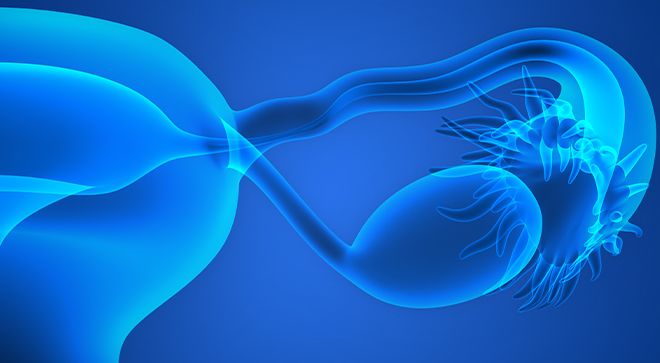Video
When to Consider Maintenance Therapy for Ovarian Cancer
Transcript:
Shubham Pant, M.D.: Tell me a little about the maintenance therapy versus just taking a clean break. First, before this, just tell me a little about the side effects of these PARP inhibitors, because I’m guessing they have their own side effects.
Ramez N. Eskander, M.D.: They do. With PARP inhibitors as a class, I like to compartmentalize side effects so I can remember them well. But essentially fatigue is a big one. But I like to reassure my patients that although it’s almost universal, we will get you through it. And the reality is, if you look at all the clinical trials that were done, less than about 10% of patients need to come off therapy altogether because of side effects. The vast majority can be managed with effective counseling, education, symptom management, and medications if needed.
The other one is GI [gastrointestinal adverse] effects: nausea, abdominal pain, constipation, diarrhea—it can run the gamut. And hematologic abnormalities: anemia; thrombocytopenia for some PARP inhibitors; lymphopenia for some PARP inhibitors. We want to assess all those parameters.
There are some very rare side effects that sometimes come across that patients may read about like myelodysplastic syndrome, AML [acute myeloid leukemia], or pneumonitis. They’re very, very rare—less than about 1% or 2% of patients—but certainly important to bring up. So education and discussion are important. Even though I talk to all my patients about it, some patients may elect not to do the maintenance therapy. But again, it’s about counseling, education, and making sure they understand what the benefits are of this approach.
Shubham Pant, M.D.: I think when they don’t want the maintenance therapies, it’s just that they want to take a break. Like just take some time off. I know you’re a good doctor, but they do not see you all the time; take a little bit of a break. Is that what the common discussion is?
Ramez N. Eskander, M.D.: Absolutely. Most commonly patients will say, “I just want time to not do anything. I know these are oral medications and that I won’t have to come to the infusion center, but I don’t want to have to think about the tablets, I don’t want to think about lab work, I don’t want to worry about coming in to visit you,” usually. But in all honesty, it’s a minority of patients.
Shubham Pant, M.D.: Jeremy, how do you deal with the psychological aspects of continuing something chronic? Sometimes with IV [intravenous], patients come in every three weeks, two weeks, get the IV, and go. Then you’re right: they can put in a box. But you’re taking a pill every day, right? So it’s harder to put that in a box.
Jeremy Hirst, M.D.: It is a constant reminder that there’s this thing that could potentially come back and get you. Again, I think focusing on how this is a tool we have to help maintain control of it is refreshing versus just being done with chemotherapy and waiting and feeling more helpless about it. They think, “Oh, I’ve got this pill.” It has this efficacy that can do something. As long as it’s not killing me, and it’s not causing all these side effects that are not intolerable, it can be good. But I’d be interested, Doña, in hearing what your experience has been.
Doña Harman: I was kind of caught in no man’s land, because I had finished my therapy and the SOLO-1 results came out for indicating maintenance in the front line for BRCA patients, but we had to discuss whether I would go on it or not go on it. My first reaction was, I want that pill, because I don’t want this to come back.
Ramez N. Eskander, M.D.: The day it came out, I got a text.
Doña Harman: And that was a long discussion. Ultimately we decided to not take the pill. So I’m not on anything right now. But that was a tough decision.
Shubham Pant, M.D.: I think that’s where discussing with your physician and your care team is very, very important, so you can understand the risk versus the benefit versus what you can do. So I think you did exactly the right thing, you reached out to your physician. You’re a well-informed patient, you reached out to your physician, talked to them about risk benefits up and down, and then made the decision together.
Ramez N. Eskander, M.D.: I think just an important point is that on the clinical trial that Doña was on, there was a maintenance arm to that trial that was either placebo or drug. It made the picture a little clearer. It was a unique situation, not necessarily someone who had no treatment at all but had completed their therapy.
Shubham Pant, M.D.: Yes. That’s why I think every patient is different. Every patient doesn’t read the book. That’s what medicine is in unique situations.
Transcript Edited for Clarity





